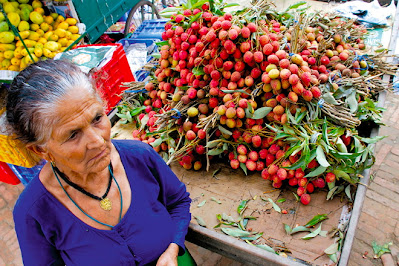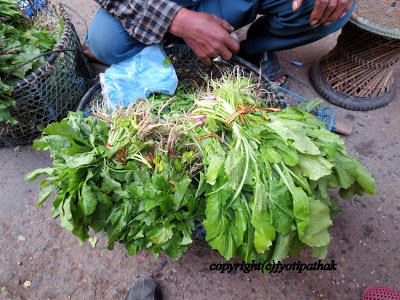Co-authored by Bikash Suwal
Some of the most fun you can have in Nepal for free are the festivals. You do not need to believe any way whatsoever, nor do you need to pay. Sometimes even the temple fees are not collected. The atmosphere is often like a parade but can have a serious feel. Please be respectful during these time and remember that even though we are spectators, the local people are worshiping their gods. They are having fun with their spirituality, so please do not insult them by smoking at the temples or pretending to be Hindu just to get a peak at an idol.
 |
| Chickens getting sacraficed for the community meal. |
Each festival, jatra, has a reason for being, a theme, a story and often even a legend. Bhairab Jatra is no exception and is one of the lesser known festivals that have unique activities for tourists to enjoy. One of the major advantages of this festival is that you can join the celebration throughout the month of April/May of any year. The Nepali calendar is based upon the lunar activities, so it often begins about 2 weeks prior to its western counterpart month. You can check the Nepali calendar for the month of Baisakh for the exact dates. The first day of Bhairab Jatra is called “Paach Arre Jatra.”
The theme of Bhairab Jatra is in unifying the community, as this jatra celebrates the lower castes, which include people of lower castes such as butcher, tailor, chariot puller and the music caste. The theme of this jatra is to show appreciation for the lower castes that do so much for society, as well as to honor Bhairab and the other gods.
 |
| If the thought of sacrafices bothers you just remember this is a time when everyone get to eat a good meal-even with meat! |
Throughout the month of Baisakh, the Idol of Bhairab is carried by chariot from one village to the next, so the various communities can celebrate the festival and honor Bhairab, probably the oldest god still being worshiped. According to the historical record, the Newar people brought Bhairab with them when they migrated to the Kathmandu Valley so many millennia ago. Even so, Bhairab is honored as the angry, strong incarnation of Shiva. But rather than causing anger or discord, Bhairab takes the anger and transmutes it. When I hung my first Bhairab mask on the wall the entire energy in my apartment softened.
The chariot is carried by people of the lower castes, which is an honor and anyone can touch and worship the idol by first touching its feet and then touching their forehead and then chest. There is also the colored powder and other items to ‘tika’ one’s forehead. Of course, there is lots of music and enjoyment throughout the festivities as the chariot is carried to the various villages with festivities going on until late into the night.
Cities and villages that celebrate the Bhairab Jatra are Kathmandu, Bhaktapur, Thimi and Kavre with the last celebration in Changunarayan where the idol is housed throughout the year. The reason for this festival has to do with Bhairab’s strength with the need to not become fooled by demonic gods.
 |
| They paraded throughout Changunarayan for a week or more with the music and dancing randomly throughout the day and night. |
|
 |
| This chariot is quite heavy and is carried while the young men dance with it still on their back-Seriously, they dance while carrying it. |
Note about co-author, Bikash Suwal: Bikash has a Master's degree in Public Administration and works full time with us at the Star View Guest House in Changunarayan. He is Newar and is a practicing Hindu.



.jpg)









Comments
Post a Comment